
For all intents and purposes, the 2013 MLB offseason is over. Sure, there are still three marquee free agents on the market, but Stephen Drew, Kendrys Morales, or Ervin Santana probably won’t change much in the way of grades. At the beginning of the month, I looked at the winners and losers of this winter, and there have actually been some changes since then – most notably, the Baltimore Orioles going from a loser to one of the teams that fared best this winter.
Anyway, here are the grades for each team and a brief explanation of why they earned the grade they received.
 Arizona Diamondbacks: D. The Diamondbacks whiffed on Shin-Soo Choo, whiffed on Jeff Samardzija, whiffed on Masahiro Tanaka, and ended up with Mark Trumbo and Bronson Arroyo. Arizona will go into 2014 with their highest payroll in club history, yet they’re arguably a worse, older team than they were in 2013, when they won 81 games for a second consecutive year. Furthermore, one of last season’s prized acquisitions, Didi Gregorius, is in a position battle to start at shortstop for the Snakes. Well then, that worked out pretty poorly for them…
Arizona Diamondbacks: D. The Diamondbacks whiffed on Shin-Soo Choo, whiffed on Jeff Samardzija, whiffed on Masahiro Tanaka, and ended up with Mark Trumbo and Bronson Arroyo. Arizona will go into 2014 with their highest payroll in club history, yet they’re arguably a worse, older team than they were in 2013, when they won 81 games for a second consecutive year. Furthermore, one of last season’s prized acquisitions, Didi Gregorius, is in a position battle to start at shortstop for the Snakes. Well then, that worked out pretty poorly for them…
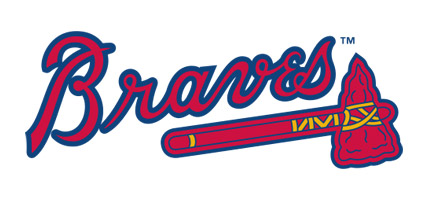 Atlanta Braves: B+. Despite only making a pair of major league acquisitions (Ryan Doumit, Gavin Floyd), the Braves had themselves a good winter because of what they’ve done in February. Atlanta has locked up four of their young cornerstone players through their arbitration years, and the contracts given to Craig Kimbrel, Julio Teheran, Andrelton Simmons, and Freddie Freeman are very favorable for the club. In a division where the longest contracts belong to older players, the Braves made a nice first step towards competing in the NL East over both the long and short term.
Atlanta Braves: B+. Despite only making a pair of major league acquisitions (Ryan Doumit, Gavin Floyd), the Braves had themselves a good winter because of what they’ve done in February. Atlanta has locked up four of their young cornerstone players through their arbitration years, and the contracts given to Craig Kimbrel, Julio Teheran, Andrelton Simmons, and Freddie Freeman are very favorable for the club. In a division where the longest contracts belong to older players, the Braves made a nice first step towards competing in the NL East over both the long and short term.
 Baltimore Orioles: B+. Baltimore’s offseason looked like a complete bust just a couple of short weeks ago. Then, Dan Duquette struck while the market was at a low point, signing Ubaldo Jimenez for just $50 million over four years and inking Nelson Cruz to a bargain basement one-year deal worth $8 million. All of a sudden, the Orioles have slotted themselves right in the thick of the AL playoff picture, and don’t seem destined to fall back to the bottom of the AL East standings.
Baltimore Orioles: B+. Baltimore’s offseason looked like a complete bust just a couple of short weeks ago. Then, Dan Duquette struck while the market was at a low point, signing Ubaldo Jimenez for just $50 million over four years and inking Nelson Cruz to a bargain basement one-year deal worth $8 million. All of a sudden, the Orioles have slotted themselves right in the thick of the AL playoff picture, and don’t seem destined to fall back to the bottom of the AL East standings.
 Boston Red Sox: C+. The defending champions didn’t have a bad offseason necessarily, but they didn’t exactly make a lot of moves that inspire much confidence in a repeat. The Sox will be replacing center fielder Jacoby Ellsbury and shortstop Stephen Drew in their lineup with a pair of rookies, Jackie Bradley Jr. and Xander Bogaerts. The Red Sox also downgraded behind the plate, bringing in veteran A.J. Pierzynski to supplant the departed Jarrod Saltalamacchia. Finally, though Ryan Dempster did walk away from the $13.25 million he was owed in 2014, the Red Sox didn’t spend that savings on anyone – at least not yet. Again, not necessarily a bad winter in Boston, but they didn’t blow the doors off of anyone either.
Boston Red Sox: C+. The defending champions didn’t have a bad offseason necessarily, but they didn’t exactly make a lot of moves that inspire much confidence in a repeat. The Sox will be replacing center fielder Jacoby Ellsbury and shortstop Stephen Drew in their lineup with a pair of rookies, Jackie Bradley Jr. and Xander Bogaerts. The Red Sox also downgraded behind the plate, bringing in veteran A.J. Pierzynski to supplant the departed Jarrod Saltalamacchia. Finally, though Ryan Dempster did walk away from the $13.25 million he was owed in 2014, the Red Sox didn’t spend that savings on anyone – at least not yet. Again, not necessarily a bad winter in Boston, but they didn’t blow the doors off of anyone either.
 Chicago Cubs: F. The Cubs were never expected to contend in 2014, but for them to essentially stand pat this winter? Yeah, that’s not going to rile up the fanbase. All signs pointed towards Chicago going all-in on Masahiro Tanaka, and they lost out on him to the Yankees. The big signings this winter for the Cubs were Jason Hammel and Jose Veras, who cost them less than $10 million combined. The Cubs may begin 2014 with their lowest payroll in a decade, and while help is on the way, they could have at least tried to appease the fans this winter instead of waging war on the rooftop owners surrounding Wrigley Field and threatening to move the club to the suburbs.
Chicago Cubs: F. The Cubs were never expected to contend in 2014, but for them to essentially stand pat this winter? Yeah, that’s not going to rile up the fanbase. All signs pointed towards Chicago going all-in on Masahiro Tanaka, and they lost out on him to the Yankees. The big signings this winter for the Cubs were Jason Hammel and Jose Veras, who cost them less than $10 million combined. The Cubs may begin 2014 with their lowest payroll in a decade, and while help is on the way, they could have at least tried to appease the fans this winter instead of waging war on the rooftop owners surrounding Wrigley Field and threatening to move the club to the suburbs.
 Chicago White Sox: A. Meanwhile on the south side, Rick Hahn has somehow turned around the fortunes of a veteran club with an awful farm system. The process began late in the 2013 season, when Hahn outbid everyone for Cuban first baseman Jose Abreu, the heir apparent to long-time Sox first baseman Paul Konerko. Then, he flipped starting pitcher Hector Santiago to the Angels in a three-way trade that netted him center fielder Adam Eaton from the Diamondbacks. Hahn worked over Kevin Towers again later in the offseason, selling high on closer Addison Reed and acquiring third baseman Matt Davidson in return. Combine all of those moves with the low risk, high reward signing of Felipe Paulino and a bullpen rebuild, and the pale hose are already on the upswing in the AL Central.
Chicago White Sox: A. Meanwhile on the south side, Rick Hahn has somehow turned around the fortunes of a veteran club with an awful farm system. The process began late in the 2013 season, when Hahn outbid everyone for Cuban first baseman Jose Abreu, the heir apparent to long-time Sox first baseman Paul Konerko. Then, he flipped starting pitcher Hector Santiago to the Angels in a three-way trade that netted him center fielder Adam Eaton from the Diamondbacks. Hahn worked over Kevin Towers again later in the offseason, selling high on closer Addison Reed and acquiring third baseman Matt Davidson in return. Combine all of those moves with the low risk, high reward signing of Felipe Paulino and a bullpen rebuild, and the pale hose are already on the upswing in the AL Central.
 Cincinnati Reds: F. The Reds made no major acquisitions this winter, but they’re in a worse position than they were at the end of 2013, when they fell to the Pirates in the NL Wild Card game. Gone is center fielder Shin-Soo Choo, and in is Billy Hamilton, who may not hit enough to be an every day player. The team signed Homer Bailey to a six year contract extension worth $105 million that didn’t seem like the best use of their resources. Really, the biggest move Cincinnati made this winter may have been in the dugout, where they replaced Dusty Baker as manager with Bryan Price. An F may not seem fair, but consider how good the Cardinals were last year (and how they somehow got better this winter) and how young and surprising the Pirates were, then look at the Reds. It’s like night and day, and some bad luck could push them to fourth place in the NL Central.
Cincinnati Reds: F. The Reds made no major acquisitions this winter, but they’re in a worse position than they were at the end of 2013, when they fell to the Pirates in the NL Wild Card game. Gone is center fielder Shin-Soo Choo, and in is Billy Hamilton, who may not hit enough to be an every day player. The team signed Homer Bailey to a six year contract extension worth $105 million that didn’t seem like the best use of their resources. Really, the biggest move Cincinnati made this winter may have been in the dugout, where they replaced Dusty Baker as manager with Bryan Price. An F may not seem fair, but consider how good the Cardinals were last year (and how they somehow got better this winter) and how young and surprising the Pirates were, then look at the Reds. It’s like night and day, and some bad luck could push them to fourth place in the NL Central.
 Cleveland Indians: D. The Indians are in a similar position as their cross-state rival. The Tribe’s only acquisition on offense, not that they needed to do much, was fourth outfielder David Murphy. On the mound, they lost Ubaldo Jimenez and didn’t replace him with anyone, failed to sign Justin Masterson to a long-term extension, and might end up going into the season with failed former Phillie prospect Carlos Carrasco as their fifth starter. I do think that John Axford will be a better option at closer for Cleveland than the released Chris Perez, but Chris Antonetti did what Dan Duquette did with the Orioles after 2012 – stood pat with a Wild Card team.
Cleveland Indians: D. The Indians are in a similar position as their cross-state rival. The Tribe’s only acquisition on offense, not that they needed to do much, was fourth outfielder David Murphy. On the mound, they lost Ubaldo Jimenez and didn’t replace him with anyone, failed to sign Justin Masterson to a long-term extension, and might end up going into the season with failed former Phillie prospect Carlos Carrasco as their fifth starter. I do think that John Axford will be a better option at closer for Cleveland than the released Chris Perez, but Chris Antonetti did what Dan Duquette did with the Orioles after 2012 – stood pat with a Wild Card team.
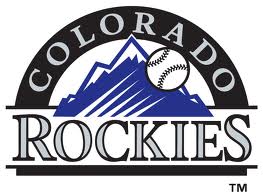 Colorado Rockies: B-. Ridiculous Boone Logan contract aside, the Rockies didn’t have a bad winter. Justin Morneau is a decent stopgap at first base as a bridge between the Todd Helton era and whoever the next long-term first baseman will be in Denver. Brett Anderson and Franklin Morales came at low costs and will be upgrades to the rotation, and Jordan Lyles might end up being an interesting name to keep an eye on. Colorado also didn’t lose any significant free agents this winter, so maybe things will start looking up for them.
Colorado Rockies: B-. Ridiculous Boone Logan contract aside, the Rockies didn’t have a bad winter. Justin Morneau is a decent stopgap at first base as a bridge between the Todd Helton era and whoever the next long-term first baseman will be in Denver. Brett Anderson and Franklin Morales came at low costs and will be upgrades to the rotation, and Jordan Lyles might end up being an interesting name to keep an eye on. Colorado also didn’t lose any significant free agents this winter, so maybe things will start looking up for them.
 Detroit Tigers: C. The Tigers had a bizarre offseason. The Doug Fister trade to the Nationals has been rightfully lambasted across the blogosphere, but the Ian Kinsler-Prince Fielder trade improved the team at two positions, and opened the door for Nick Castellanos to start at third. Detroit also signed Proven Closer Joe Nathan, Proven Set-Up Man Joba Chamberlain, and Proven Fourth Outfielder Rajai Davis, bolstering their bullpen and bench for possible October success.
Detroit Tigers: C. The Tigers had a bizarre offseason. The Doug Fister trade to the Nationals has been rightfully lambasted across the blogosphere, but the Ian Kinsler-Prince Fielder trade improved the team at two positions, and opened the door for Nick Castellanos to start at third. Detroit also signed Proven Closer Joe Nathan, Proven Set-Up Man Joba Chamberlain, and Proven Fourth Outfielder Rajai Davis, bolstering their bullpen and bench for possible October success.
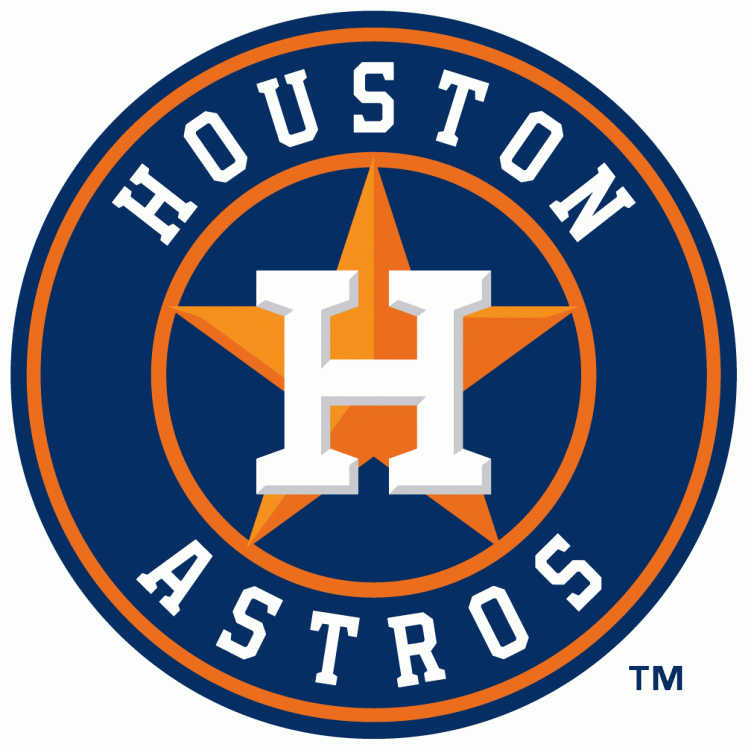 Houston Astros: C+. Houston had a nice offseason, which is a little surprising for a team that has been in the process of gutting their major league club over the last two years. The Dexter Fowler trade is a perfect one for this team, considering the lack of value given up by the team and Fowler’s production level. Scott Feldman’s three-year, $30 million contract looks downright reasonable compared to some of the other deals signed by pitchers this winter. I also think the numerous acquisitions that the Astros made will certainly help out this year. All in all, Jeff Luhnow and company had an active offseason that does nothing to derail their offseason goals.
Houston Astros: C+. Houston had a nice offseason, which is a little surprising for a team that has been in the process of gutting their major league club over the last two years. The Dexter Fowler trade is a perfect one for this team, considering the lack of value given up by the team and Fowler’s production level. Scott Feldman’s three-year, $30 million contract looks downright reasonable compared to some of the other deals signed by pitchers this winter. I also think the numerous acquisitions that the Astros made will certainly help out this year. All in all, Jeff Luhnow and company had an active offseason that does nothing to derail their offseason goals.
 Kansas City Royals: C+. Kansas City took a big step towards contention after last winter’s James Shields trade, but they fell short of the playoffs. This winter, the Royals didn’t give up any significant prospects and made smaller moves that didn’t move the dial all that much – Jason Vargas, Omar Infante, and Norichika Aoki were all acquired this winter by Dayton Moore to replace Ervin Santana, the black hole at second base, and David Lough. But did the Royals really jump from 86 wins to 92 wins? I’m not so sure of that, and that’s the reason for the middle of the road grade.
Kansas City Royals: C+. Kansas City took a big step towards contention after last winter’s James Shields trade, but they fell short of the playoffs. This winter, the Royals didn’t give up any significant prospects and made smaller moves that didn’t move the dial all that much – Jason Vargas, Omar Infante, and Norichika Aoki were all acquired this winter by Dayton Moore to replace Ervin Santana, the black hole at second base, and David Lough. But did the Royals really jump from 86 wins to 92 wins? I’m not so sure of that, and that’s the reason for the middle of the road grade.
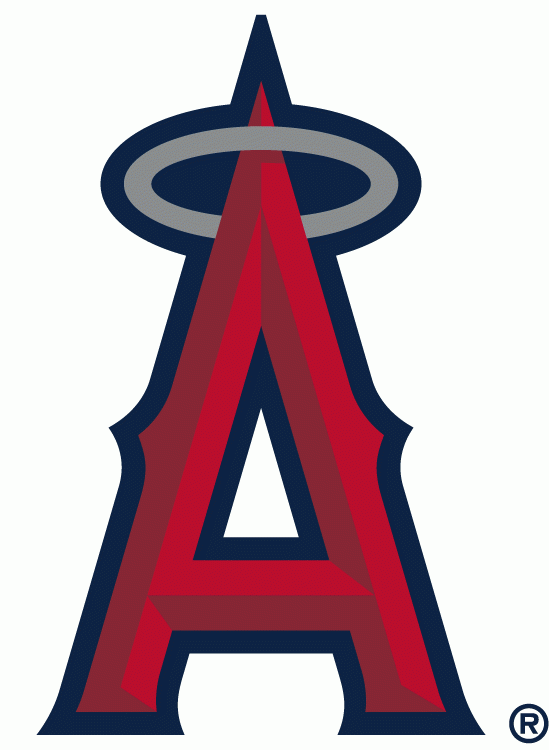 Los Angeles Angels: B+. The Angels departed from their usual MO this winter, focusing on cheaper upgrades instead of breaking the bank on marquee guys. And honestly, I think that worked out much better for the Angels – Hector Santiago and Tyler Skaggs aren’t Masahiro Tanaka and Matt Garza, but they’re cheaper and only cost the Angels Mark Trumbo, who didn’t have a place to play in 2014. The Angels also used a position of strength to fill a hole by trading Peter Bourjos for David Freese. Los Angeles also filled a hole in their bullpen with Joe Smith, and made a nice low-risk signing with DH Raul Ibanez. And hey, any offseason where you come close to a contract extension with the best player in baseball has to be a good one.
Los Angeles Angels: B+. The Angels departed from their usual MO this winter, focusing on cheaper upgrades instead of breaking the bank on marquee guys. And honestly, I think that worked out much better for the Angels – Hector Santiago and Tyler Skaggs aren’t Masahiro Tanaka and Matt Garza, but they’re cheaper and only cost the Angels Mark Trumbo, who didn’t have a place to play in 2014. The Angels also used a position of strength to fill a hole by trading Peter Bourjos for David Freese. Los Angeles also filled a hole in their bullpen with Joe Smith, and made a nice low-risk signing with DH Raul Ibanez. And hey, any offseason where you come close to a contract extension with the best player in baseball has to be a good one.
 Los Angeles Dodgers: B-. For the Dodgers, 2014 was an understated winter. They re-signed third baseman Juan Uribe, because they didn’t have many other options on the market. They brought in Cuban second baseman Alexander Guerrero, because Robinson Cano would have cost ownership a few internal organs. They kept their bullpen together by re-signing Brian Wilson and J.P Howell and bolstered it by signing Chris Perez and Jamey Wright. The Dodgers also made two fantastic signings for the back of their rotation in Dan Haren and Paul Maholm, and kept Clayton Kershaw in southern California for the foreseeable future with a mammoth control. So, why don’t they get a higher grade? The Dodgers spent a lot of money this winter on guys like Guerrero, Wilson, and Howell, and I don’t think any of them will end up being worth the money. Those salaries are a drop in the bucket for the Dodgers, but just because you *can* absorb bad contracts doesn’t mean that you *should* offer bad contracts.
Los Angeles Dodgers: B-. For the Dodgers, 2014 was an understated winter. They re-signed third baseman Juan Uribe, because they didn’t have many other options on the market. They brought in Cuban second baseman Alexander Guerrero, because Robinson Cano would have cost ownership a few internal organs. They kept their bullpen together by re-signing Brian Wilson and J.P Howell and bolstered it by signing Chris Perez and Jamey Wright. The Dodgers also made two fantastic signings for the back of their rotation in Dan Haren and Paul Maholm, and kept Clayton Kershaw in southern California for the foreseeable future with a mammoth control. So, why don’t they get a higher grade? The Dodgers spent a lot of money this winter on guys like Guerrero, Wilson, and Howell, and I don’t think any of them will end up being worth the money. Those salaries are a drop in the bucket for the Dodgers, but just because you *can* absorb bad contracts doesn’t mean that you *should* offer bad contracts.
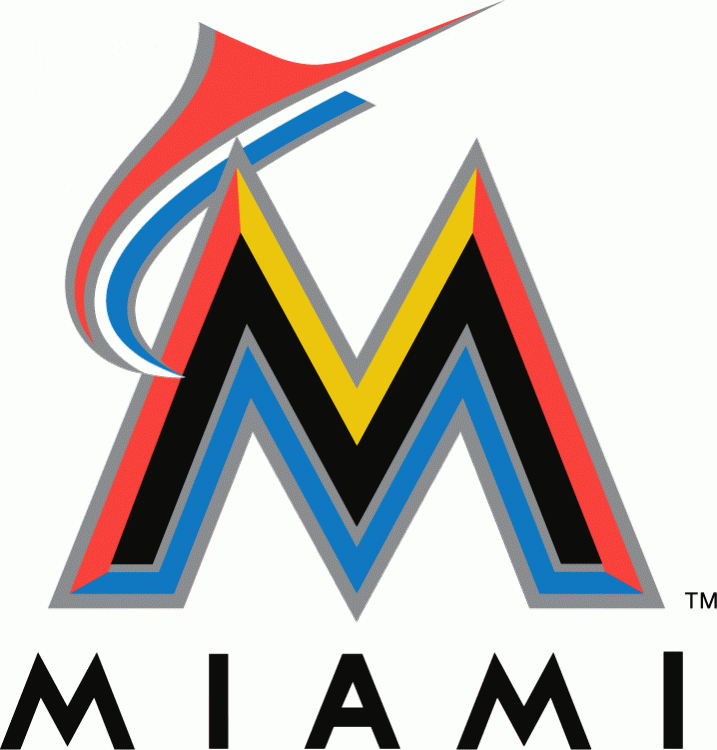 Miami Marlins: C-. The Marlins had a solid winter, but it was underwhelming. They have four new offensive starters, and there’s a solid chance that the only one of the four that might end up above replacement level is catcher Jarrod Saltalamacchia. But on the bright side, they ended the Logan Morrison Show, made a few low risk acquisitions (excluding the aforementioned offensive starters), and they still have an awesome core of young players. They didn’t move the needle much at all this winter, but at least they didn’t actively sabotage their club.
Miami Marlins: C-. The Marlins had a solid winter, but it was underwhelming. They have four new offensive starters, and there’s a solid chance that the only one of the four that might end up above replacement level is catcher Jarrod Saltalamacchia. But on the bright side, they ended the Logan Morrison Show, made a few low risk acquisitions (excluding the aforementioned offensive starters), and they still have an awesome core of young players. They didn’t move the needle much at all this winter, but at least they didn’t actively sabotage their club.
 Milwaukee Brewers: C. Milwaukee put together a sneaky good winter. Dealing Norichika Aoki might not be a popular move, but they’re selling high on an older guy, picking up an interesting minor league arm in Will Smith and opening a hole in the outfield for Khris Davis. But enough abut that – the Brewers’ signing of Matt Garza is one of the better moves of the winter, considering the contracts signed by the other free agent pitchers on the market, the lack of draft pick compensation attached to Garza, and the interesting option structure that Doug Melvin worked into the contract. Sure, the Brewers still have an ugly situation at first base and their rotation doesn’t have much depth at all, but they’re a better team today than they were in September.
Milwaukee Brewers: C. Milwaukee put together a sneaky good winter. Dealing Norichika Aoki might not be a popular move, but they’re selling high on an older guy, picking up an interesting minor league arm in Will Smith and opening a hole in the outfield for Khris Davis. But enough abut that – the Brewers’ signing of Matt Garza is one of the better moves of the winter, considering the contracts signed by the other free agent pitchers on the market, the lack of draft pick compensation attached to Garza, and the interesting option structure that Doug Melvin worked into the contract. Sure, the Brewers still have an ugly situation at first base and their rotation doesn’t have much depth at all, but they’re a better team today than they were in September.
 Minnesota Twins: B-. I’m really not enamored with the signings of Jason Kubel and Kurt Suzuki, and the playing time that each of those guys will get, but the Twins shored up an awful starting rotation by signing Ricky Nolasco and Phil Hughes while also keeping Mike Pelfrey around. The Twins are in a similar situation as the Brewers – still probably not a contender, but they could advance to third (or possibly even second) place in their division.
Minnesota Twins: B-. I’m really not enamored with the signings of Jason Kubel and Kurt Suzuki, and the playing time that each of those guys will get, but the Twins shored up an awful starting rotation by signing Ricky Nolasco and Phil Hughes while also keeping Mike Pelfrey around. The Twins are in a similar situation as the Brewers – still probably not a contender, but they could advance to third (or possibly even second) place in their division.
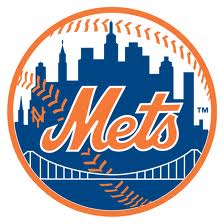 New York Mets: B. Stop the presses – the Mets spent money this winter. And they didn’t just sign lower tier free agents, either – Curtis Granderson and Bartolo Colon were two of the better free agents available. Throw in the solid signing of Chris Young, and you have all the makings of a pretty good winter…well, except for the whole “Matt Harvey Tommy John surgery” thing. While these signings may backfire on the Mets, at least they’re trying instead of just pocketing their revenues as the club recovers from the Wilpons getting beaten over the head in the Bernie Madoff scandal.
New York Mets: B. Stop the presses – the Mets spent money this winter. And they didn’t just sign lower tier free agents, either – Curtis Granderson and Bartolo Colon were two of the better free agents available. Throw in the solid signing of Chris Young, and you have all the makings of a pretty good winter…well, except for the whole “Matt Harvey Tommy John surgery” thing. While these signings may backfire on the Mets, at least they’re trying instead of just pocketing their revenues as the club recovers from the Wilpons getting beaten over the head in the Bernie Madoff scandal.
 New York Yankees: B. A B? But the Yankees spent half a billion dollars this winter! While that’s true, the Yankees aren’t a flawless team. Ivan Nova and Davis Phelps are still filling two spots in their rotation, and it’s not a stretch to say there are questions about C.C. Sabathia, Masahiro Tanaka, Hiroki Kuroda, and Michael Pineda as well. Their bullpen looks like a mess in front of closer Maria…er, David Robertson. The most “sure thing” in their infield is Kelly Johnson. Yes, the Yankees revamped their outfield in spectacular fashion and made a great signing with Brian McCann, but this team somehow still has holes going into 2014 – something you never want to hear after such a busy winter.
New York Yankees: B. A B? But the Yankees spent half a billion dollars this winter! While that’s true, the Yankees aren’t a flawless team. Ivan Nova and Davis Phelps are still filling two spots in their rotation, and it’s not a stretch to say there are questions about C.C. Sabathia, Masahiro Tanaka, Hiroki Kuroda, and Michael Pineda as well. Their bullpen looks like a mess in front of closer Maria…er, David Robertson. The most “sure thing” in their infield is Kelly Johnson. Yes, the Yankees revamped their outfield in spectacular fashion and made a great signing with Brian McCann, but this team somehow still has holes going into 2014 – something you never want to hear after such a busy winter.
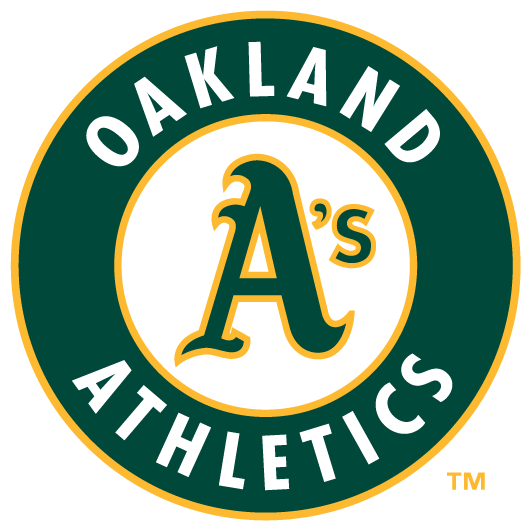 Oakland Athletics: A-. Billy Beane went all-in this winter, acquiring Jim Johnson to replace Grant Balfour as closer, signing Scott Kazmir to replace Bartolo Colon in the rotation, bringing in more bullpen depth in Luke Gregerson and Fernando Abad, and strengthening Oakland’s bench with Nick Punto and Craig Gentry. There were teams improved their teams more than the A’s, but I don’t think any team improved themselves with as little money as Oakland did.
Oakland Athletics: A-. Billy Beane went all-in this winter, acquiring Jim Johnson to replace Grant Balfour as closer, signing Scott Kazmir to replace Bartolo Colon in the rotation, bringing in more bullpen depth in Luke Gregerson and Fernando Abad, and strengthening Oakland’s bench with Nick Punto and Craig Gentry. There were teams improved their teams more than the A’s, but I don’t think any team improved themselves with as little money as Oakland did.
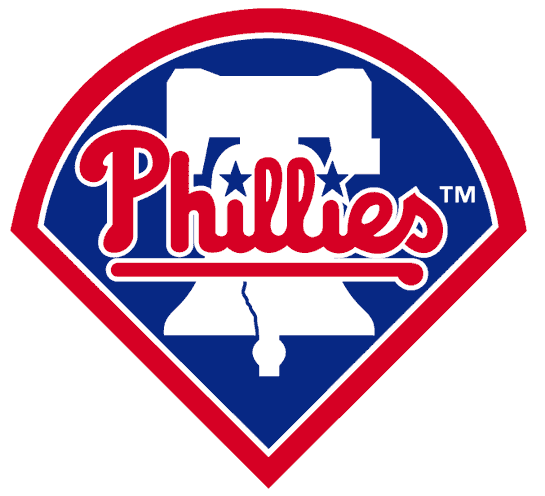 Philadelphia Phillies: D. The Phillies have committed to contending in 2014, despite a roster that is continually getting older, more expensive, and less productive. So of course, Ruben Amaro doubled down on old players, signing Marlon Byrd to a two-year deal, giving Carlos Ruiz a three-year extension, and signing A.J. Burnett for $16 million. Philadelphia is probably going to roll into 2014 with the largest payroll in franchise history, and they *still* look like a sub-.500 team.
Philadelphia Phillies: D. The Phillies have committed to contending in 2014, despite a roster that is continually getting older, more expensive, and less productive. So of course, Ruben Amaro doubled down on old players, signing Marlon Byrd to a two-year deal, giving Carlos Ruiz a three-year extension, and signing A.J. Burnett for $16 million. Philadelphia is probably going to roll into 2014 with the largest payroll in franchise history, and they *still* look like a sub-.500 team.
 Pittsburgh Pirates: C-. This is a difficult one, because there wasn’t much that the Pirates could do to improve themselves for 2014 without blowing up a chunk of their farm system or handcuffing their payroll. But the moves that the team did make don’t exactly inspire confidence – they didn’t acquire a legitimate platoon partner for Gaby Sanchez at first base, they replaced A.J. Burnett in the rotation with Edinson Volquez, and they didn’t bring in a replacement for Marlon Byrd’s bat in the lineup, instead choosing to roll the dice with Jose Tabata and possibly prospect Gregory Polanco. I’m not calling for the Pirates to trade for David Price or Giancarlo Stanton here, and I really don’t think someone like Kendrys Morales would be a good fit, but some sort of step forward after the franchise’s first playoff berth in 20 years would have been nice to see.
Pittsburgh Pirates: C-. This is a difficult one, because there wasn’t much that the Pirates could do to improve themselves for 2014 without blowing up a chunk of their farm system or handcuffing their payroll. But the moves that the team did make don’t exactly inspire confidence – they didn’t acquire a legitimate platoon partner for Gaby Sanchez at first base, they replaced A.J. Burnett in the rotation with Edinson Volquez, and they didn’t bring in a replacement for Marlon Byrd’s bat in the lineup, instead choosing to roll the dice with Jose Tabata and possibly prospect Gregory Polanco. I’m not calling for the Pirates to trade for David Price or Giancarlo Stanton here, and I really don’t think someone like Kendrys Morales would be a good fit, but some sort of step forward after the franchise’s first playoff berth in 20 years would have been nice to see.
 St. Louis Cardinals: A. It’s amazing how the Cardinals continually rotate players in and out of their lineup. Carlos Beltran is a free agent? Great! We’ll move Allen Craig to right field and slot Matt Adams at first base. The Angels want to unload Peter Bourjos? Great, we’ll trade David Freese for him, shift Matt Carpenter to third, and make Kolten Wong the second baseman. The Tigers didn’t give Jhonny Peralta a qualifying offer? There’s our new shortstop! It’s enthralling to watch. This team won 97 games last year, and they got younger and arguably better this winter.
St. Louis Cardinals: A. It’s amazing how the Cardinals continually rotate players in and out of their lineup. Carlos Beltran is a free agent? Great! We’ll move Allen Craig to right field and slot Matt Adams at first base. The Angels want to unload Peter Bourjos? Great, we’ll trade David Freese for him, shift Matt Carpenter to third, and make Kolten Wong the second baseman. The Tigers didn’t give Jhonny Peralta a qualifying offer? There’s our new shortstop! It’s enthralling to watch. This team won 97 games last year, and they got younger and arguably better this winter.
 San Diego Padres: C. San Diego made some solid moves this winter – Josh Johnson, Joaquin Benoit, Alex Torres – but they didn’t do much of anything to repair an offense that was one of the worst in the National League last year. All the Padres did for their offense was acquire Seth Smith from the A’s in exchange for reliever Luke Gregerson, which really just adds another wrench to the outfield situation in San Diego.
San Diego Padres: C. San Diego made some solid moves this winter – Josh Johnson, Joaquin Benoit, Alex Torres – but they didn’t do much of anything to repair an offense that was one of the worst in the National League last year. All the Padres did for their offense was acquire Seth Smith from the A’s in exchange for reliever Luke Gregerson, which really just adds another wrench to the outfield situation in San Diego.
 San Francisco Giants: C-. Brian Sabean’s MO is well-known by now – he sticks to veterans, and is fiercely loyal to his own players. Tim Lincecum, Hunter Pence, and Javier Lopez were all re-signed to multi-year deals, and Ryan Vogelsong was also brought back for a little too much money. Then, Sabean went into veteran-mode, signing Michael Morse to a one-year deal to..play the outfield every day, and picking up Tim Hudson to fill Barry Zito’s rotation spot. It’s like the Phillies method, but with some younger players sprinkled in.
San Francisco Giants: C-. Brian Sabean’s MO is well-known by now – he sticks to veterans, and is fiercely loyal to his own players. Tim Lincecum, Hunter Pence, and Javier Lopez were all re-signed to multi-year deals, and Ryan Vogelsong was also brought back for a little too much money. Then, Sabean went into veteran-mode, signing Michael Morse to a one-year deal to..play the outfield every day, and picking up Tim Hudson to fill Barry Zito’s rotation spot. It’s like the Phillies method, but with some younger players sprinkled in.
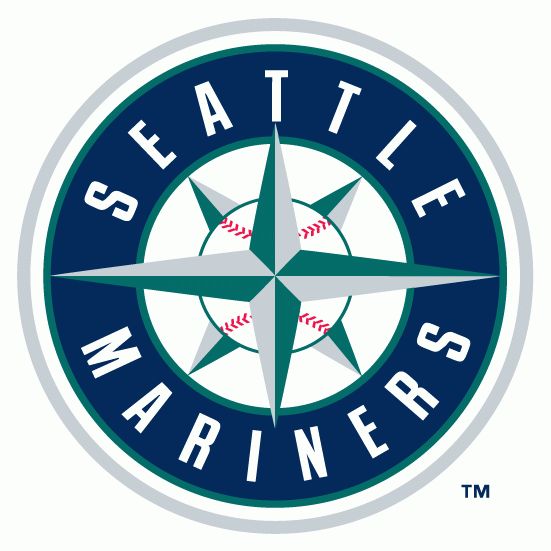 Seattle Mariners: B. Seattle needed to make a splash this winter, and they did that by signing Robinson Cano. But the moves that they surrounded the Cano signing with don’t really inspire confidence about their 2014 contention chances. Logan Morrison and Corey Hart are decent enough players, but neither is a huge difference maker on offense, nor is Fernando Rodney a large enough Band-Aid to patch the gaping hole in Seattle’s bullpen. Seattle also didn’t address their rotation woes at all aside from buying low on Scott Baker after he missed nearly all of 2013. In short, the Mariners did a lot this winter, but I don’t think it was enough.
Seattle Mariners: B. Seattle needed to make a splash this winter, and they did that by signing Robinson Cano. But the moves that they surrounded the Cano signing with don’t really inspire confidence about their 2014 contention chances. Logan Morrison and Corey Hart are decent enough players, but neither is a huge difference maker on offense, nor is Fernando Rodney a large enough Band-Aid to patch the gaping hole in Seattle’s bullpen. Seattle also didn’t address their rotation woes at all aside from buying low on Scott Baker after he missed nearly all of 2013. In short, the Mariners did a lot this winter, but I don’t think it was enough.
 Tampa Bay Rays: A-. As the old phrase goes, “that’s so Rays”. And sure enough, the Rays had a tremendous winter once again. First and foremost, they did *not* trade ace David Price, refusing to sell low on their best asset. The club revamped their bullpen by signing closer Grant Balfour, acquiring The Heath Bell Experience, picking up Brad Boxberger in a trade, and bringing back a hopefully healthy Juan Carlos Oviedo. The Rays also added some pitching depth in former Nationals prospect Nate Karns (in exchange for third catcher Jose Lobaton and a pair of other prospects), and solidified their catching depth by re-signing Jose Molina and acquiring Ryan Hanigan in the Bell trade. Tampa Bay also re-signed David DeJesus and James Loney, while bringing in Logan Forsythe as part of the return from San Diego along with Boxberger. It’s amazing what Tampa Bay does year after year on such a shoestring budget.
Tampa Bay Rays: A-. As the old phrase goes, “that’s so Rays”. And sure enough, the Rays had a tremendous winter once again. First and foremost, they did *not* trade ace David Price, refusing to sell low on their best asset. The club revamped their bullpen by signing closer Grant Balfour, acquiring The Heath Bell Experience, picking up Brad Boxberger in a trade, and bringing back a hopefully healthy Juan Carlos Oviedo. The Rays also added some pitching depth in former Nationals prospect Nate Karns (in exchange for third catcher Jose Lobaton and a pair of other prospects), and solidified their catching depth by re-signing Jose Molina and acquiring Ryan Hanigan in the Bell trade. Tampa Bay also re-signed David DeJesus and James Loney, while bringing in Logan Forsythe as part of the return from San Diego along with Boxberger. It’s amazing what Tampa Bay does year after year on such a shoestring budget.
 Texas Rangers: A-. During a winter where the AL West went crazy, the Rangers had to follow suit. They let Nelson Cruz walk, and replaced him with Shin-Soo Choo. Texas dealt long-time second baseman Ian Kinsler to the Tigers for Prince Fielder, upgrading their offense and allowing stud prospect Jurickson Profar to move into the lineup as well. The Rangers also bought low on a few players, bringing in Tommy Hanson, J.P. Arencibia, and Michael Choice to fill lesser roles on the team. Out of all of the AL West squads, the Rangers may have improved the most out of all of them, and are once again in a great position to contend.
Texas Rangers: A-. During a winter where the AL West went crazy, the Rangers had to follow suit. They let Nelson Cruz walk, and replaced him with Shin-Soo Choo. Texas dealt long-time second baseman Ian Kinsler to the Tigers for Prince Fielder, upgrading their offense and allowing stud prospect Jurickson Profar to move into the lineup as well. The Rangers also bought low on a few players, bringing in Tommy Hanson, J.P. Arencibia, and Michael Choice to fill lesser roles on the team. Out of all of the AL West squads, the Rangers may have improved the most out of all of them, and are once again in a great position to contend.
 Toronto Blue Jays: F. After last winter’s blockbuster trade that went poof, the Blue Jays pretty much stood pat this winter. Their only major acquisition was Dioner Navarro, who will be replacing J.P. Arencibia behind the dish. Aside from that…it’s a lot of the same stuff in Toronto. The Blue Jays didn’t bother replacing the injury-prone Josh Johnson in the rotation, instead opting to roll with an endless parade of injury-prone starters past R.A. Dickey and Mark Buehrle. The Blue Jays are counting on health to improve on their 74 wins from last year, but considering how much work the other AL East teams put into improving their teams this winter, Toronto might be left in the dust.
Toronto Blue Jays: F. After last winter’s blockbuster trade that went poof, the Blue Jays pretty much stood pat this winter. Their only major acquisition was Dioner Navarro, who will be replacing J.P. Arencibia behind the dish. Aside from that…it’s a lot of the same stuff in Toronto. The Blue Jays didn’t bother replacing the injury-prone Josh Johnson in the rotation, instead opting to roll with an endless parade of injury-prone starters past R.A. Dickey and Mark Buehrle. The Blue Jays are counting on health to improve on their 74 wins from last year, but considering how much work the other AL East teams put into improving their teams this winter, Toronto might be left in the dust.
 Washington Nationals: A. We close with the Nationals, who took a preseason favorite team from 2013 and turned it into…an even better preseason favorite team. They replaced Dan Haren in the rotation with Doug Fister, a superior, cheaper pitcher. They return their entire starting offense from a year ago, though Anthony Rendon will be up and starting at second base for the entire year. They added three complimentary pieces at reasonable prices as well – Jose Lobaton, Nate McLouth, and Jerry Blevins. All Washington has to do is stay healthy, and they should coast to the playoffs.
Washington Nationals: A. We close with the Nationals, who took a preseason favorite team from 2013 and turned it into…an even better preseason favorite team. They replaced Dan Haren in the rotation with Doug Fister, a superior, cheaper pitcher. They return their entire starting offense from a year ago, though Anthony Rendon will be up and starting at second base for the entire year. They added three complimentary pieces at reasonable prices as well – Jose Lobaton, Nate McLouth, and Jerry Blevins. All Washington has to do is stay healthy, and they should coast to the playoffs.

